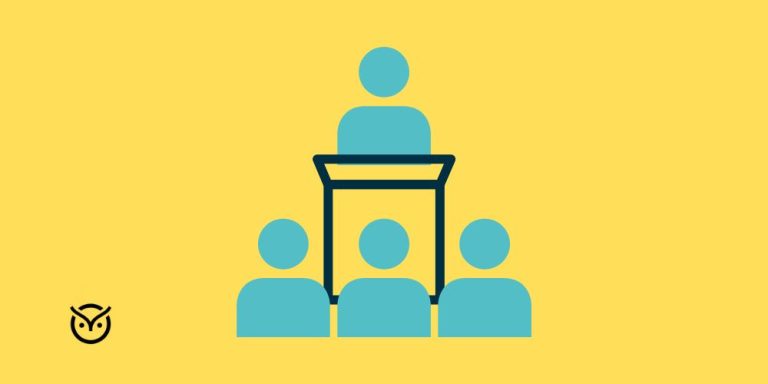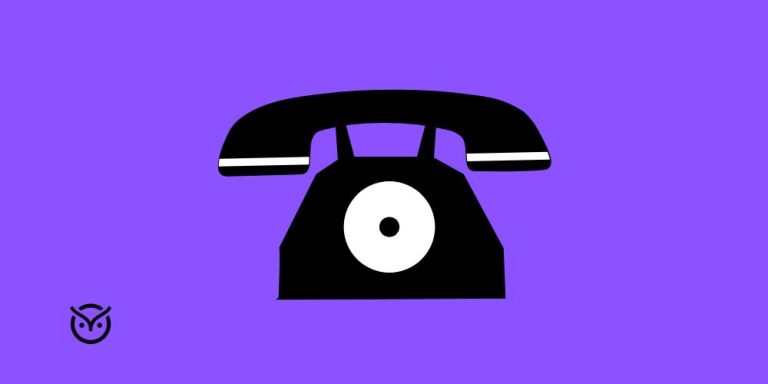How to Answer DEI Interview Questions?

TL;DR
- DEI questions assess values, not just skills
- Know what diversity, equity, and inclusion mean
- Use real examples to show action and impact
- Apply the STAR method for clear answers
- Align responses with company DEI values
- Be authentic, even if still learning
- Show active listening and continuous growth
So you’ve landed the interview. Your resume checks out, your experience is solid, and then the interviewer hits you with, “Can you give an example of how you supported diversity at work?” Just like that, it’s not about your skills anymore. It’s about your values. This is where most candidates freeze or ramble through a generic answer.
You don’t need to be a DEI expert to respond with clarity and authenticity. This blog will walk you through what Diversity, Equity, and Inclusion really mean, the most common diversity interview questions, and how to give thoughtful, real answers even if you haven’t led a DEI committee before.
What is Diversity, Equity, and Inclusivity?

Swipe and flip to find out!
This goes beyond buzzwords. Companies that focus on DEI aren’t just following a trend. They’re seeing real business impact. According to McKinsey & Company’s 2023 report, companies with the most ethnically diverse executive teams were 39 percent more likely to be more profitable than their less diverse peers.
Employers are now asking diversity and inclusion interview questions not just to evaluate your experience, but to understand your mindset. How do you work with people who aren’t like you? What steps do you take to make others feel included? This is why it’s essential to know how to answer an interview question about diversity with real-world understanding and self-awareness.
Common DEI Interview Questions and How to Answer Them

Diversity and inclusion questions can be tough to answer well. Here’s a quick guide with common DEI questions and sample diversity interview answers to help you prepare.
1. What does diversity, equity, and inclusion mean to you?
Why it’s asked: Employers want to assess your understanding of DEI concepts and how they align with your personal and professional values.
How to answer: Break it down in your own words. What does each part mean to you—diversity, equity, inclusion? Then connect the dots. Show why they matter at work and how they’ve shaped the way you make decisions or collaborate with others.
Sample answer:
“Diversity is about having different backgrounds and perspectives. Equity means making sure everyone has what they need to succeed. Inclusion is helping people feel like they truly belong. At my last job, I started a mentorship program to support underrepresented team members and help them feel more connected.”
2. Can you share a time when you helped create a more inclusive and diverse work environment?
Why it’s asked: The goal is to see real proof that you support and act on DEI values.
How to answer: Keep it specific. Talk about a real moment where you helped make your workplace more inclusive. What was the situation? What did you actually do? And what changed because of it? Skip the fluff and get to the part that shows you took action and it worked.
Sample answer:
“In my last position, I noticed a lack of diversity in our hiring process. I collaborated with HR to revise our recruitment strategies, including outreach to diverse professional organizations. As a result, we saw a 25% increase in applications from underrepresented groups.”
3. How do you handle situations where a colleague exhibits biased behavior?
Why it’s asked: Employers want to see how you respond when things get uncomfortable and whether you’re willing to speak up in the right way.
How to answer: Demonstrate your approach to confronting bias constructively, emphasizing communication, education, and adherence to company policies.
Sample answer:
“I once heard a coworker make a comment that crossed the line. I spoke with them privately, explained why it was a problem, and followed up with HR to make sure it was addressed. It showed we take inclusion seriously and helped set the tone for the team.”
4. Can you share a time when you adjusted the way you communicated to work better with people from different backgrounds or perspectives?
Why it’s asked: Employers want to know if you can collaborate effectively with individuals from varied backgrounds.
How to answer: Share a real example where you changed how you communicated to better connect with team members from different backgrounds or with different communication styles. Explain how this helped the team work well together and reach a shared goal.
Sample answer:
“Led a global team where some liked straight talk and others leaned relational. So I ditched the one-size-fits-all playbook. Talked goals when needed, but made space for real check-ins too. Morale went up. So did the results.”
5. How do you make sure your work includes everyone?
Why it’s asked: This one’s checking if you actually walk the talk. Do you make inclusion part of your everyday work or just drop buzzwords in meetings?
How to answer: Discuss specific practices you employ to promote inclusivity, such as seeking diverse perspectives, using inclusive language, or considering accessibility in your work.
Sample answer:
“I ask for input from teammates with different perspectives to make sure what we build works for everyone. I also stick to clear, inclusive language and keep design accessible for people with disabilities.”
6. Tell us about a time when you advocated for someone different from yourself.
Why it’s asked: This checks if you not only recognize diversity but also take action to support it in real scenarios.
How to answer: Choose a story that reflects empathy and advocacy, whether you stood up for a coworker, amplified someone’s voice, or mentored someone with a different background.
Sample answer:
“During a cross-functional project, a quieter team member who was also the only international hire was often overlooked during meetings. I started actively inviting their input and suggested we rotate who leads weekly discussions. Not only did this boost their confidence, but it also improved our team’s collaboration.”
7. How have you helped create a more inclusive environment at work?
Why it’s asked: They’re checking for your hands-on experience in building inclusion, not just supporting it passively.
How to answer: Think of tangible actions like initiating policy changes, leading workshops, rethinking hiring practices, etc.
Sample answer:
“As a team lead, I saw that our onboarding materials weren’t great for neurodiverse hires. I teamed up with HR to make them clearer and added visuals. I also ran a short session where new hires could share how they work best. It helped everyone settle in faster and feel more supported.”
8. What would you do if you saw someone being excluded from a group or conversation?
Why it’s asked: Inclusion isn’t just about policies. It’s about daily behavior. Employers want to know you’re an active ally.
How to answer: Speak to emotional awareness, tact, and taking initiative without making a situation worse.
Sample answer:
“At lunch, I saw a new teammate getting left out. I brought them into the convo with a quick question and made sure they felt heard. Afterward, I circled back with the team and reminded everyone why inclusion doesn’t happen by accident.”
9. Why do you think DEI matters in the workplace?
Why it’s asked: This reveals whether DEI is just a checkbox for you, or a value you believe in.
How to answer: Share how DEI impacts productivity, creativity, or even your own sense of belonging.
Sample answer:
“When people feel safe and seen, they contribute more fully. Diverse teams bring more perspectives to solve problems. I’ve seen firsthand how inclusive brainstorming sessions led to better product features that served more customers.”
10. Have you ever had to learn something new about another culture or identity to work better with a colleague?
Why it’s asked: This checks if you’re self-aware, open to feedback, and able to grow without getting defensive.
How to answer: Show a willingness to listen, ask questions, and grow even if you initially made mistakes.
Sample answer:
“I once set a deadline that overlapped with a colleague’s religious holiday I didn’t know about. After I found out, I apologized, shifted the timeline, and added reminders to stay aware in the future. I also asked the team to share any important dates early so we could plan better together.”
Are You DEI-Aware?
Strategies for Responding to DEI Interview Questions

Use these strategies to prep smarter and answer diversity and inclusion interview questions without sounding like you copied from a textbook.
1. Understand the Core Concepts
Before you can answer questions about diversity, equity, and inclusion (DEI), ensure you have a clear understanding of these terms.
2. Reflect on Personal Experiences
Interviewers love real stories. So, prepare by reflecting on past situations where you:
- Collaborated with diverse teams.
- Addressed or witnessed bias or discrimination.
- Participated in or led DEI-related programs or training.
Having these examples ready will help you answer DEI interview questions and answers confidently.
3. Use the STAR Method
Structure your responses using the STAR method:
- Situation: Set the scene. What was going on? Who was involved?
- Task: What was your role in it? What needed fixing or solving?
- Action: Break down what you actually did. Be clear, not fancy.
- Result: What happened after? Show the impact with real outcomes.
This method ensures your answers are organized and impactful, especially when addressing how to answer diversity interview questions.
Drag-and-Drop: STAR or NOT?
Drag each answer snippet to the correct category. Is it a proper STAR response or not?
✅ STAR Format
❌ Not STAR Format
4. Align with Company Values
Stalking the company’s DEI page isn’t optional. It’s your pre-game warmup. Dig into what they stand for. Then bake that into your answers like it was your idea all along. When they ask about diversity and inclusion interview questions, don’t just nod and smile. Show you actually get it. Align your values. Mirror theirs. Make it obvious you’re not guessing. You’re built for this.
5. Be Honest and Authentic
Faking it? Bad move. Interviewers can smell it. If you don’t have hands-on DEI experience, say so. Then pivot. Talk about what you’re doing to change that. Mention the workshops. The reading. The moments when you realized DEI isn’t just HR buzz. That’s how to answer an interview question about diversity without sounding like a walking cliché.
6. Practice Active Listening
Here’s the deal. Talking is easy. Listening? That’s where the pros shine. If you’ve ever paused, actually heard someone out, and avoided turning a team meeting into a disaster zone, that’s your story. Use it. Show how active listening helped you get results. It proves you’re not just rehearsing diversity interview questions and answers. You live them. Quietly. Competently. Like a real team player.
7. Highlight Continuous Learning
Say you’re still learning. That’s not a weakness. That’s strategy. Talk about the DEI course you took, the podcast that changed your perspective, or the moment you realized “inclusive” isn’t just a poster in the break room. That’s how to answer a diversity interview question without sounding like you copied it off the company website.
Conclusion
Knowing how to answer DEI interview questions isn’t just about checking a corporate box. It’s about revealing how you show up for others when no one’s grading you. Your response should reflect your understanding of fairness, empathy, and the value of different perspectives. In today’s workplace, where diversity is real and expectations around equity are high, that matters more than ever.






